Ostarbeiter at the Prater
Film opens on the Ferris wheel at the Vienna Prater amusement park. Dissolve and other simple special effects throughout. Wide shot of crowds (some wearing German/Austrian uniforms; some in street clothes) at the park followed by closer view of two women and two men walking and smiling. Shots of attractions at the park: the Ferris wheel and a roller coaster (camera views from the ground as well as on the roller coaster). More shots of the “Voelkergemisch” of Nazi uniformed men mingling with males and females in civilian dress. The clothing of the latter indicates that most of them are not German and are presumably the foreign forced laborers, perhaps of several different nationalities. Visitors on roller coasters and other park rides. (03:36) Three men walk toward camera wearing badges on their jackets. The word OST (indicating an eastern foreign worker) is legible on one. Children riding attractions. (04:11) CU on boy about 10-12 years old wearing skullcap (seems unlikely to be Jewish) and an OST badge. More crowd shots with emphasis on the foreign laborers followed by closer shots. Many of the women wear headscarves and at least one badge is visible. People on rides shot from various vantage points. A group of women in civilian dress wave up at the Ferris wheel. (06:52) A man in a fez rings a bell. A woman attempts a feat of strength with a sledgehammer. From at least 07:22 the camera periodically follows two specific women as they participate in various activities. They walk toward the camera at 08:02. A man wearing an OST badge and smoking at appears at 09:19. More shots of crowds at the park and a streetcar as the film appears to end. Then random extra shots: close-ups of a streetcar, a monument to Wilhelm von Tegethtoff, and the same shot of the Ferris wheel against the sky that began the film. Born in Vösendorf (Lower Austria); attendance at commercial school; as a pupil he conducts film productions for schools; 1916 volunteer for the Österreichisch-Ungarische Kinoindustrie GmbH (Anton Kolm); then chief engineer for the Fakir-Company and fund manager of the Imperial-Film 1920 is sent to Berlin as an assistant director of the Regent-Film 1921 return to Vienna; directing debut “Die beiden Rivalen” 1925-1930s produces multiple worker films ( e.g. “Mr. Pim’s Trip to Europe”) 1938 banned from working; does for a living by selling substandard film copies 1947 foundation of Pax-Film; produces the documentary “Der Leidensweg Österreichs” (today: “Sturmjahre”) by using his own archive (1937) and contemporary material [According to Büttner, Dewald. Über Ruinen zum neuen Leben, 2006.] Born in Trent as August Maria Wiberal. In 1923 ,Wiberal starts to work as a photo journalist in Vienna (Verlag Wiener Zeitungen, Der Abend, Telegraf, Echo); by 1930 he works as a cameraman for films. 1941-1947 in USA. 1947, return to Austria; editor for various newspapers (Kurier, Kronen-Zeitung, Neues Österreich) and photographer at the Pressebildagentur Franz Votava; parts of his estate can be found in the archives of the social democratic Arbeiterzeitung. Wiberal dies in Vienna in 1961. [According to Albertina - Sammlung Online (2015).]
- EHRI
- Archief
- us-005578-irn718545
- Film
- Vienna, Austria
- AUSTRIA
Bij bronnen vindt u soms teksten met termen die we tegenwoordig niet meer zouden gebruiken, omdat ze als kwetsend of uitsluitend worden ervaren.Lees meer










